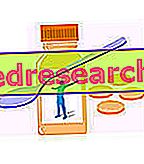Generality
Spermioculture is the laboratory diagnostic test that allows the detection of pathogenic microorganisms within a sperm sample.
The possible finding of pathogenic microorganisms in the sperm is an important indicator of genital infection, of the organs in which sperm and seminal fluid usually flow.

The spermioculture consists, essentially, of two phases, which in chronological order are: the phase of collection of the sperm sample, by the patient, and the phase of analysis of the sperm sample, by specialized medical personnel.
As regards the first phase, this represents a very delicate moment, which must take place according to precise procedures, in order not to pollute the product withdrawn.
As far as the second phase is concerned, this consists of inoculating a small amount of sperm in different culture media and observing whether and in which of these culture media microbial growth takes place.
Short review of what sperm is
Sperm is seminal fluid containing sperm .
The seminal fluid is the fluid secreted by the prostate ; sperms, on the other hand, are male sex cells (or male gametes ), produced by the testicles and having a fundamental role in the reproductive process.
What is spermioculture?
Spermioculture is the laboratory diagnostic test, which allows to detect the presence and type of any pathogenic microorganisms, inside a sperm sample.
Spermioculture is a useful investigation to identify infections affecting the organs in which sperm and seminal fluid flow, namely: the prostate, the seminal vesicles, the epididymis and the urethra (*).
* NB: readers should note that the diagnostic test of choice, for the search for pathogens in the urethra, is the urethral swab.
WHAT IT CONSIDERS IN BRIEF
Spermioculture basically consists of two phases: the sperm sample collection phase and the analysis phase of the aforementioned sample .
The semen collection phase is the task of the individual under examination, ie the patient; the analysis phase, however, is the responsibility of the specialized staff of a medical-hospital laboratory.
Clearly, the semen sample collection phase precedes the analysis phase.
DIFFERENCES WITH SPERMIOGRAM
Despite having both sperm as the object of analysis, spermioculture and spermiogram are two diagnostic investigations with totally different aims.
In fact, while spermioculture is aimed at finding pathogenic microorganisms in the sperm, the spermiogram serves to clarify some important characteristics of the sperm, including: viscosity, liquefaction, sperm motility and sperm count.
Indications
In general, doctors prescribe spermioculture to men who:
- They experience pain or a burning sensation in correspondence with the reproductive organs (ex: penis, testicles etc.);
- They produce sperm containing blood or in any case of an abnormal appearance;
- They are not fertile;
- They present a particular severe varicocele;
- Based on a previous spermiogram, they present white blood cells in the sperm;
- They leak transparent fluid from the penis.
Male individuals who fall into one or more of the above circumstances may suffer from some infection in the reproductive organs, an infection that should be identified and treated as soon as possible.
Preparation
The collection of the sperm sample for spermioculture must take place in specific ways .
Exposed with the right advance by the laboratory technician who will carry out the following investigations, or by the same doctor who prescribed the spermioculture, the aforementioned methods and their observance are fundamental for a correct execution of the diagnostic examination in question.
For a correct collection of the sperm sample to be subjected to sperm culture, it is essential:
- The use of a cup with a wide mouth and provided with a closure cap;
- Avoid touching the cup inside it or the lid on the side facing the inside of the cup. Clearly, it is possible to touch the cup externally;
- Collect in a clean place;
- Wash your hands and penis thoroughly and dry them with clean absorbent paper, before starting the collection;
- Avoid using lubricants, soaps, etc .;
- Collect all the sperm produced and deliver it to the analysis laboratory as soon as possible;
- Inform your doctor of any use of drugs in the days prior to collection / examination, especially if these drugs are antibiotics . If the patient has used antibiotics in the previous days, the collection of the sample for spermioculture is postponed to at least 10 days after the last pharmacological intake;
- Perform the examination after 3-5 days of abstinence from sexual activity;
- Avoid urinating in the 2-3 hours prior to collection;
- Clearly report the sperm sample owner.
Procedure
Immediately after taking the semen sample from the analysis laboratory, a technician or a physician-pathologist of the facility will inoculate the aforementioned sample in many different culture media, each specific for the growth of a certain pathogenic microorganism (NB : generally they are culture media for the development of bacteria).
If there is a certain pathogenic micro-organism in the sperm sample, the culture medium suitable for the growth of the latter will reveal it, since the development of a microbial colony will be observed in the plate containing the culture medium in question. Clearly, in a hypothetical situation of the presence of a certain pathogenic microorganism, all the other plates with the other culture media will not cause any growth of microorganisms.
Here is an example to understand:
- The laboratory technician prepares 4 plates with 4 different culture media: one for the growth of the bacterium A, one for the growth of the bacterium B, one for the growth of the bacterium C and one for the growth of the bacterium D.
Then, inoculate some sperm into all 4 plates, and wait to see which culture medium favors the growth of bacteria.
If, within a few hours, the only plate showing signs of bacterial growth is the one containing the culture medium for the development of the bacterium C, it means that the semen sample collected and analyzed contains the bacterium C.
In light of what has been stated so far, the absence of microbial growth in all the culture media tested is a sign that the semen sample under observation has no pathogenic microorganism (in technical jargon, it is said to be "clean").
Review of what is a growing medium?
A growing medium is essentially an environment rich in nutrients essential for the growth, development and reproduction of a very specific micro-organism.
In the medical-pathological field, the use of culture media serves to identify the presence and type of microorganisms, in certain tissue samples or other substances.
WHEN THE MICRORGANISM IS A BATTERY: THE ANTIBIOTIC TESTS
If the organism present in the sperm sample is a bacterium (most cases), some antibiotic tests are planned. These antibiotic tests consist of testing the sensitivity of the bacterium detected to different antibiotics and observing which of the latter is more effective.
The most effective antibiotic will be, as it is easy to understand, the drug prescribed to fight the infection of the individual, who underwent sperm culture.
Results
In general, the results of a sperm culture are available to the patient 2-3 days after the examination.
Spermioculture is a precise investigation, which allows physicians to plan the most appropriate antimicrobial therapy if the test in question has shown any infection.
BEWARE OF FALSE-NEGATIVE!
The sperm of the human being contains substances that could, at times, prevent the growth of bacteria in the laboratory, although these bacteria are present.
This occurrence represents the most common cause of false-negatives in case of spermioculture.



